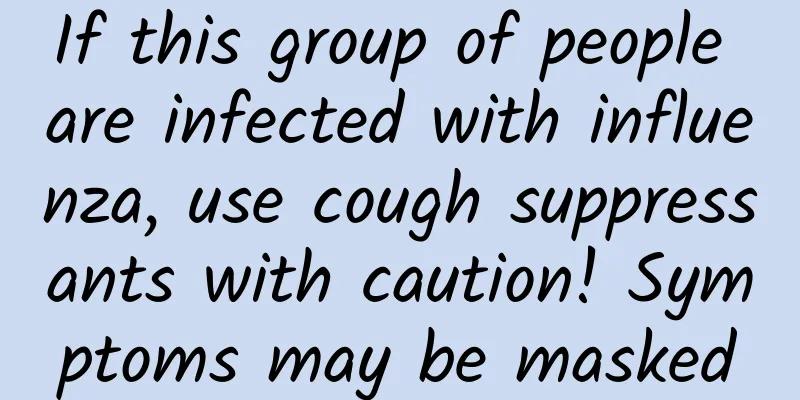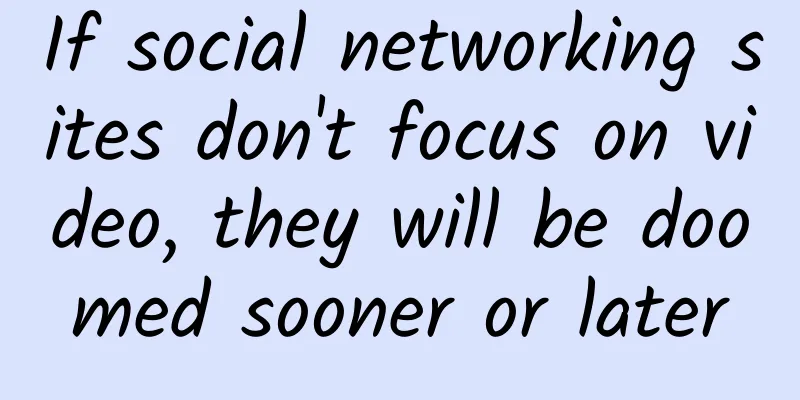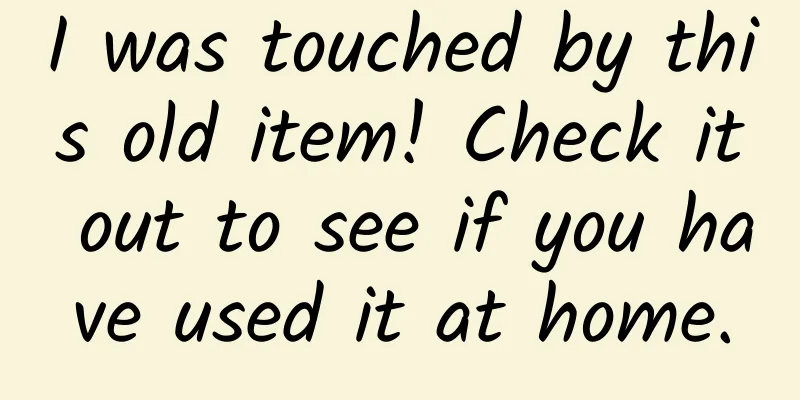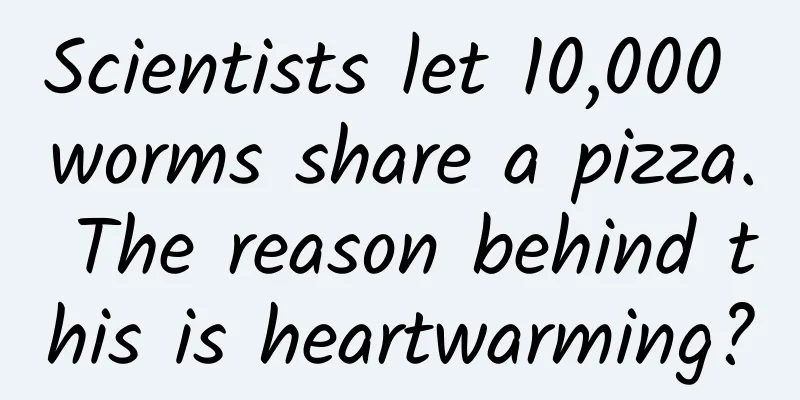When obsessive-compulsive disorder meets AI, is there a cure for this "alternative terminal illness"?
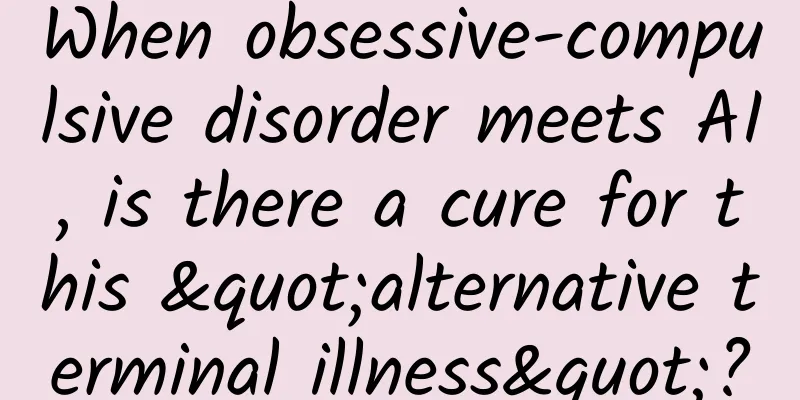
|
Written by: Zhu Hengheng Editor: Wang Haha Layout: Li Xuewei In life, there are always some people who like to put their things in order, or love cleanliness and have mysophobia. For such people, we call them "obsessive-compulsive disorder". Medically, obsessive-compulsive disorder is defined as a type of anxiety disorder, which is mainly manifested by obsessive thoughts and compulsive behaviors. For example, even though you have locked the door when you go out, you still wonder whether you have locked it or not. What if it is not locked? For another example, on the way home from get off work or school at night, even though you look back and see no one behind you, you still can't help but suspect that someone is following you. Or, even though you feel it is unreal, you still feel that someone around you may hurt you. I believe that in daily life, most people have had some of the above experiences. So does this mean that we have obsessive-compulsive disorder? Generally speaking, it is normal to have the above symptoms occasionally in life, as long as it does not affect normal life. The symptoms of real obsessive-compulsive disorder are much more serious. For example, Leo in the movie "The Aviator" suspected that his hands were not washed clean, so he rubbed them repeatedly until they bled, or he was afraid that the toilet handle was dirty and did not dare to open the door until someone else opened the door. Of course, there may be some obsessive-compulsive disorder patients in life whose symptoms are not so obvious, and it is more difficult to diagnose. Recently, a research team led by Professor David A. Borton from the Institute for Brain Science at Brown University in the United States conducted long-term EEG monitoring on 5 patients with severe obsessive-compulsive disorder and used artificial intelligence to analyze the compulsive behaviors in patients' lives. For the first time, they identified the brain wave signals related to obsessive-compulsive disorder in the brain, paving the way for the diagnosis and targeted treatment of obsessive-compulsive disorder. In this regard, Professor Borton said, "OCD is a disease whose symptom severity varies greatly over time and is affected by a variety of environmental factors. Previously, deep brain stimulation can effectively relieve obsessive-compulsive symptoms in patients who have not responded well to drug treatment. However, due to the inability to identify the timing of the onset of OCD in patients, deep brain stimulation can bring a series of side effects. In this study, we identified the brain wave signal related to OCD for the first time. Adjusting the intensity of deep brain stimulation based on this signal will undoubtedly reduce side effects." The study, titled "Long-term ecological assessment of intracranial electrophysiology synchronized to behavioral markers in obsessive-compulsive disorder," was published in the latest issue of Nature Medicine. Obsessive compulsive disorder is really a disease In daily work and life, if someone is too serious, we may joke that he has "OCD", as if OCD is just a small matter. However, in fact, OCD has a great impact on the patient's life. Since OCD patients can realize that various obsessive thoughts are just their imagination, they want to get rid of this kind of thinking, but they can't control themselves from imagining it, so they often have serious anxiety and pain, which will have a serious impact on their study, work, life and interpersonal communication. In recent years, statistics show that the incidence of obsessive-compulsive disorder is rising. Studies have shown that the prevalence of obsessive-compulsive disorder in the general population is close to 2%, and about 2/3 of patients develop the disease before the age of 25. In other words, there are about 2 obsessive-compulsive disorder patients for every 100 people, and most of them are young people. The global disease survey conducted by the World Health Organization (WHO) also found that obsessive-compulsive disorder has become one of the 20 diseases with the heaviest disease burden among young people aged 15 to 44. However, clinically, the number of patients diagnosed with OCD is far lower than this proportion. First, unlike ordinary people, in the consciousness of many OCD patients, various compulsive thoughts or behaviors are normal, and some patients will conceal their symptoms and are unwilling to seek medical treatment. Secondly, because the symptoms of OCD are very extensive, the patient's medical treatment process is often very tortuous and difficult to diagnose. In addition, many OCD patients often also suffer from other mental illnesses, such as anxiety, depression, etc., which leads to missed diagnosis. (Source: psu.edu) At present, there are three main ways to treat obsessive-compulsive disorder. The first is drug treatment. Although the cause of obsessive-compulsive disorder is still unknown, studies have found that there are biological factors in the onset of obsessive-compulsive disorder, and the imbalance of neurotransmitters in the brain is an important cause of obsessive-compulsive disorder. Current anti-obsessive drugs are antidepressants, which can regulate the level of neurotransmitters in the brain of patients with obsessive-compulsive disorder, so that the neurotransmitters in the brain tend to be normal, thereby improving obsessive-compulsive symptoms. The second is psychotherapy. Commonly used psychotherapy methods for obsessive-compulsive disorder include cognitive behavioral therapy, psychodynamic therapy, supportive psychotherapy and Morita therapy. Among them, cognitive behavioral therapy is considered to be the most effective psychological therapy for obsessive-compulsive disorder. Generally speaking, drug therapy combined with psychotherapy can significantly improve patients' obsessive-compulsive symptoms and reduce the long-term recurrence rate. Clinically, about 70% of patients respond to combined treatment. Finally, deep brain stimulation is a viable treatment option for patients who do not respond to medication and psychological interventions. Artificial intelligence helps capture brain signals of obsessive-compulsive disorder Deep brain stimulation is the process of implanting electrodes into the patient's brain through surgery and using a pulse generator to stimulate specific areas deep inside the patient's brain to correct abnormal brain waves and relieve abnormal neurological symptoms. Since deep brain stimulation does not damage the brain's structure and normal function, it is widely used in the treatment of a variety of neurological and psychiatric diseases, such as Parkinson's disease, essential tremor, dystonia, epilepsy, Alzheimer's disease, etc. Deep brain stimulation can have a very good effect on patients with refractory obsessive-compulsive disorder who have not responded to various drugs and psychotherapy. More than half of the patients have significantly improved their symptoms and their quality of life has been significantly improved. Although deep brain stimulation is not effective for the obsessive-compulsive symptoms of some patients with obsessive-compulsive disorder, their accompanying symptoms such as anxiety and depression have been significantly improved. Compared with other neurosurgical treatments, the main advantage of deep brain stimulation is that it can achieve precise treatment as much as possible, increase efficacy and reduce adverse reactions by adjusting the stimulation frequency and parameters. However, for patients with obsessive-compulsive disorder, the frequency and intensity of deep brain stimulation are adjusted by the doctor's own experience. The time for symptom relief after stimulation varies from weeks to months for different patients, which makes management very complicated. Therefore, in order to improve the efficacy of deep brain stimulation, it is necessary to accurately identify the onset of obsessive-compulsive disorder in patients and provide targeted stimulation. Figure | Collection of intracranial electrophysiological data (Source: Nature) To this end, the research team led by Professor Borton recruited 5 patients with severe obsessive-compulsive disorder who were undergoing deep brain stimulation treatment for the experiment. They collected the brain wave activity of the patients, used videos to record the patients' lives and behaviors, and used artificial intelligence to evaluate the patients' various subtle emotional changes and match them with brain wave activity. The results showed that, unlike previous experience, the brain signals of OCD come not only from the ventral internal capsule/ventral striatum of the brain, but also from the cortex-striatum-thalamus-cortex loop. In addition to EEG signals, the researchers also collected a set of biomarkers of OCD patients' behavior, including facial expressions and body movements. Through artificial intelligence, they found that these behaviors and characteristics are closely related to changes in internal brain signals. Figure | Schematic diagram of the effects of deep brain stimulation (Source: Nature) At the same time, the researchers demonstrated that deep brain stimulation when patients showed these OCD criteria, both in terms of brain signals and behavioral markers, could significantly improve patients' OCD symptoms. Obviously, using these markers, people can develop more accurate automated deep brain stimulation systems in the future. Once a patient shows signs of obsessive-compulsive disorder, the system can automatically capture and promptly use deep brain stimulation for targeted relief, and automatically adjust the intensity of stimulation according to the intensity of the patient's symptoms. It is reported that the researchers are currently developing an automated deep brain stimulation system. At the same time, the researchers also plan to further recruit more patients for trials to capture more obsessive-compulsive disorder signs, so as to guide the automated deep brain stimulation system more accurately and effectively. References: https://www.nature.com/articles/s41591-021-01550-z https://www.brown.edu/news/2021-12-09/ocd Academic headlines |
Recommend
Baidu promotion video information flow advertising display style - live broadcast
Information flow advertising style - live broadca...
Some of our thoughts and attempts on end-to-end speech translation
Introduction: As of 2019, there are more than 200 ...
Useful Information Collection | How to Scientifically Distinguish Giant Pandas? (Except "Huahua")
Eat, sleep, climb trees, roll around Just a few s...
The candlelight flickers like a dancing elf, a monologue of the Sony LSPX-S2 crystal sound tube, a desktop artwork
Ten years ago, Sony created the design concept of...
Advertising placement: A look at some of the public algorithms of various media from an operational perspective
The media’s algorithm is a black core. We don’t k...
A woman endured the flu for 10 days, and both of her lungs turned white! Doctors urgently remind us →
Recently, a 51-year-old woman became a hot topic ...
Tencent’s advertising and gaming industry buying report for June!
This article shares with you Tencent’s advertisin...
New media operation: data mining method!
Unlike traditional marketing and promotion method...
Apple MacBook Pro has a new problem: the keyboard doesn't work
The market share of the Mac series has been declin...
Product Operation: How to position the product?
Sometimes in the workplace, we encounter products...
Is it that the personalities of husband and wife are becoming more and more alike, or are people with similar personalities more likely to become partners?
© Anna Breit/Connected Archives Leviathan Press: ...
Event operation and promotion, growth fission from 0 to 1!
1. Ideas for fission activities from 0 to 1 I bel...
How powerful is the "Magic Pen Ma Liang" in the criminal investigation world?
This issue is planned by: rain This issue's c...
